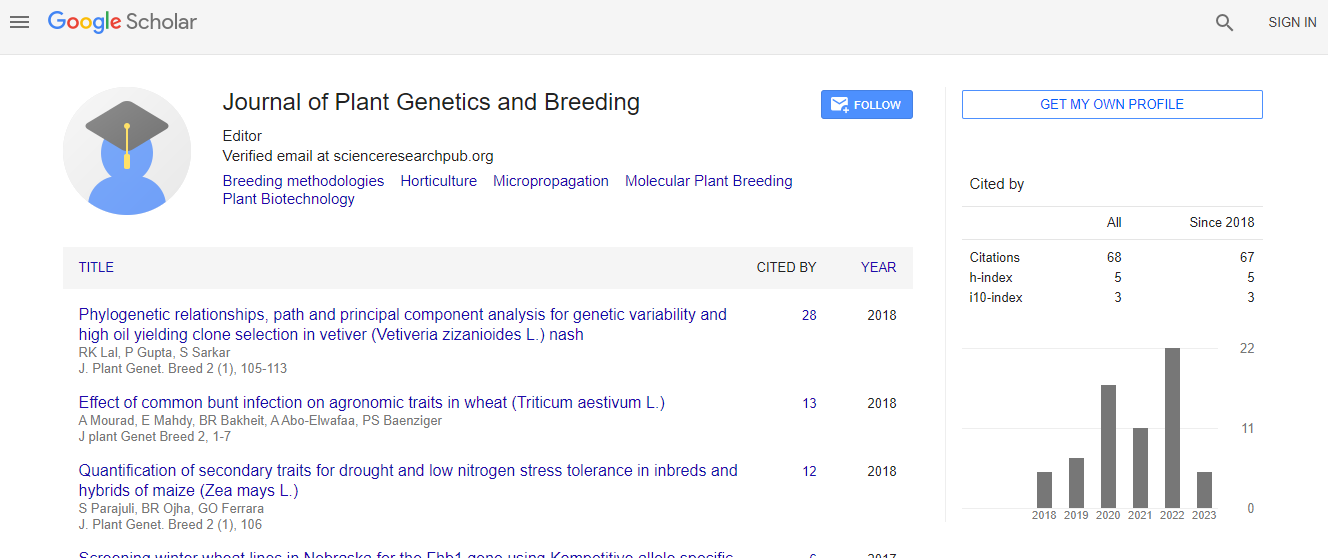Genotyping by sequencing and rust resistance of Azerbaijani Durum wheat germplasm
*Corresponding Author:
Copyright: © 2018 . This is an open-access article distributed under the terms of the Creative Commons Attribution License, which permits unrestricted use, distribution, and reproduction in any medium, provided the original author and source are credited.
Abstract
Genotyping-by-sequencing (GBS) is a genetic screening method for discovering and genotyping novel single nucleotide polymorphisms (SNPs) in crop genomes and populations. In the current research a phenotypic and genotypic assessment of 76 durum wheat (Triticum durum Desf.) accessions of Azerbaijan origin was made using six phenotypic traits and GBS technology. After screening for leaf and stem rust resistance at the seedling stage, 16 genotypes displayed resistance to leaf rust and 14 to stem rust. Some relationships were found between resistance to leaf rust and phenotypic traits of botanical varieties. The highest Pearson’s correlation (r=0.53; p < 0.001) was noted between awn color and pubescence. The durum wheat genotypes fell into four main groups in the clustered heat map; grouping according to botanical variety. A total of 748 SNP markers were obtained for the collection. The average polymorphic information content and genetic diversity index for the entire collection were 0.329 and 0.420, respectively. With respect to population structure, two and three subpopulations were identified. The principal component and cluster analyses resulted very comparable to the population structure analysis at k = 3. Clustering analysis based on GBS data showed the genotypes divided into six clusters. Some consistency was noted between the grouping of genotypes and their pedigrees, and the botanical variety. The results could facilitate durum wheat collection, conservation, breeding and will open the door for future association mapping studies. In addition, the resistant genotypes can be utilized as donors to broaden the genetic base of rust resistance in wheat breeding.

